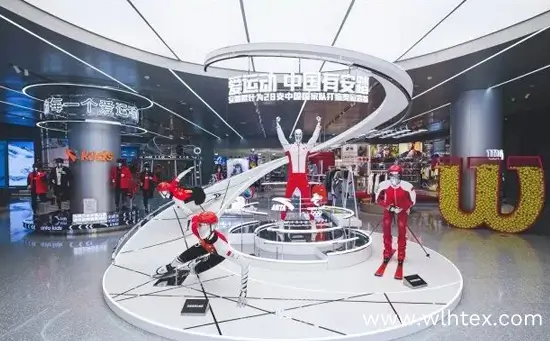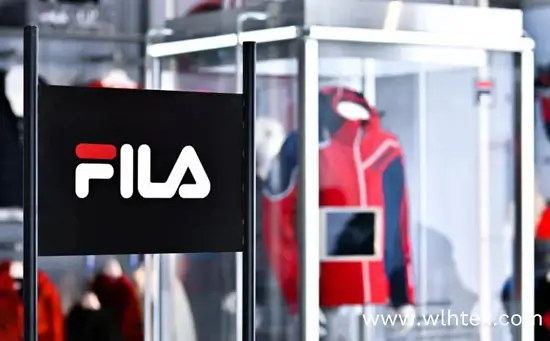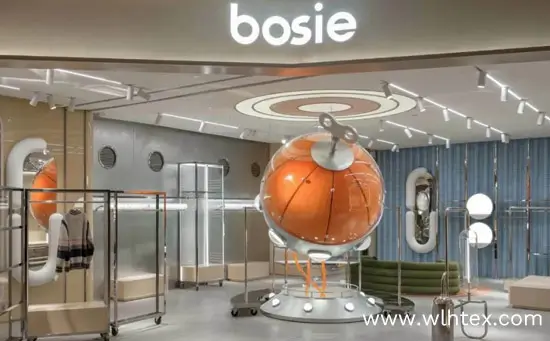The China sports brand big store trend, an involution or a breakthrough?

Recently, lululemon’s store in Shanghai’s Jing’an Kerry Center officially opened, becoming the brand’s largest store in the Asia-Pacific market and drawing significant attention from the industry media.
Across the entire sportswear industry, numerous brands are not just limited to this trend of large stores. Observations show that this wave of “big stores” that has emerged this year has brands focusing not only on channel expansion in popular commercial areas but also on opting for large, standalone multi-story buildings. Additionally, in terms of spatial layout, brands are emphasizing a more upscale store image and a better offline shopping experience for consumers.

01
Brand Big Stores Are on the Rise
Lululemon is not the only one; looking across the entire sportswear industry, this year has seen a rush by sports brands to open large stores.
ANTA, for instance, recently opened its latest large store in Beijing, situated in the core commercial district of Beijing’s Dongsihuan (East Fourth Ring) area, at Chaoyang Heshenghui. This store spans the third and fourth floors of the shopping mall, making it the only multi-story sports brand store in the Heshenghui commercial district.
ANTAs high-end product lines are also adopting the large store strategy. In Chengdu’s IFS (International Finance Square), Arc‘teryx has erected a high-profile barricade. This Arc‘teryx store is set to be renovated to meet global flagship store standards, with a standalone building spanning two floors.
Additionally, according to insiders, Disante will close its store in Shanghai’s Jing’an Kerry Center in April this year, with plans to open a large themed store capable of representing the brand’s image.
Li-Ning is also opening flagship stores at a rapid pace. They recently opened new flagship large stores in Shanghai’s Yu Garden, Disney Town, and Nanjing East Road.
In Shijiazhuang’s Beiguo Outlets, Nike is about to open a two-story standalone large store next month. In Xiamen’s SM City Plaza Phase 3, the latest NIKE RISE 1200 store is set to open in May this year, becoming Fujian’s first highest-standard NIKE store, occupying a double-level area of 1700 square meters.
Today, the characteristics of large stores are increasingly focused on brand location choices, expansion in size, and adjustments to the layout of interior spaces.
In ANTA’s largest brand collective store, ANTA 982 Creative Space, the 3000-square-meter space is divided into skiing, rock climbing, basketball, a freezer room, a running shoe modeling area, as well as a brand area and a coffee area. ANTA leverages advanced technology to create a more immersive and dynamic consumer experience scene.

02
The Upgrade of Large Stores is Becoming a Trend
The beginning of the large store trend can be traced back to around 2008. However, it was around 2018, with the rise of the Chinese domestic consumption trend, that brands began to accelerate their efforts in opening large stores. In the ever-evolving retail landscape of that time, it was found that opening large stores was an effective way to promote long-term brand growth through various innovative practices.
Li-Ning is a notable example. After Qian Wei became the CEO and Joint Executive Director of Li-Ning Group in 2019, “opening large stores, opening good stores, and expanding high-quality and profitable stores” became a key strategy for Li-Ning’s offline channel layout. Other brands like ANTA and Nike also reached a consensus on “opening efficient large stores.”
Reviewing Li-Ning’s 2019 financial reports, as of December 31, 2019, Li-Ning had 7,550 sales points, including regular stores, flagship stores, and Li-Ning Fashion Stores. Compared to the previous year, the brand achieved a 10%-20% increase in same-store sales across all channels.
ANTA followed a similar path, and by the end of 2019, it had a total of 10,516 brand stores. FILA brand stores numbered around 1,951, and other types of stores were also on the rise.
The current trend of large stores is no longer just about extensive expansion. Many brands are adjusting to changes caused by the pandemic, market conditions, and shifting consumer habits. “Closing inefficient small stores and opening high-end large stores” has become a common strategy among brands. There are increased demands for fine-tuning, location selection, and internal planning of these large stores, emphasizing high-end experiences.
When examining the changing demands for brand store adjustments and turnovers in high-end commercial districts today, it becomes evident that the upgrading of large stores holds great importance, and it is a prevailing trend.

03
Challenges Behind the Big Store Model
In reality, there are still limitations and challenges associated with the operation of large stores at the current stage for various brands. In the past, the large store model was a demonstration of a company’s strength, typically pursued after reaching a certain level of growth and having the financial capability to handle high rent and operational costs.
In the current era of large store operations, in addition to managing the high financial costs, brands must also cope with shifting consumer behavior and increased competition from other brands. Brands need to invest effort in figuring out how to effectively retain the loyalty of existing customers and attract new ones, ensuring that the novelty of the store experience doesn’t diminish over time.
Sustaining customer loyalty in brand large stores is indeed a challenging task. Liu Guangyao, the founder of bosie, has expressed that maintaining a constantly fresh and evolving experience in experiential stores to encourage repeat visits and purchases is a significant challenge.
According to independent analyst Cheng Weixiong in the fashion and apparel industry, the current state of the large store model in China is neither definitively good nor bad. He suggests that many of the so-called “large stores” have only reached the “large” stage. Furthermore, in the process of upgrading large stores, brands must always be mindful that the substantial investments in large stores need to result in corresponding high revenues and profits, or else large stores may not have a future.
Obviously, the big store model has become an inevitable topic in brand development, but to what extent it will continue to evolve remains to be seen. As some experts suggest, while the large store model has been around for a while, it is still in an exploratory phase in its new stage, and brands need to continue exploring and finding their own path within this model.



